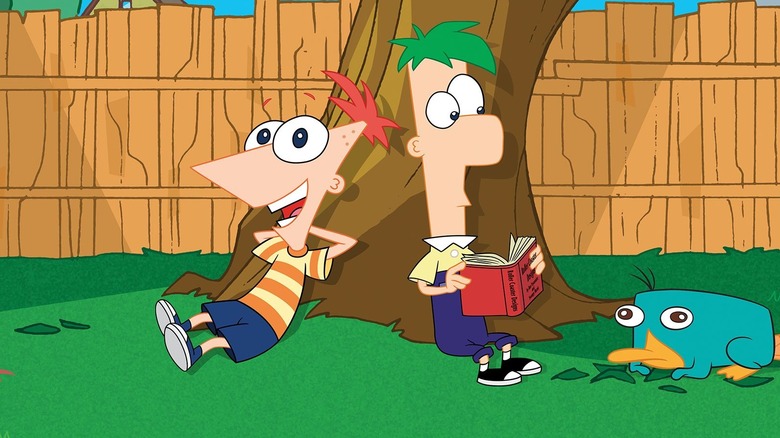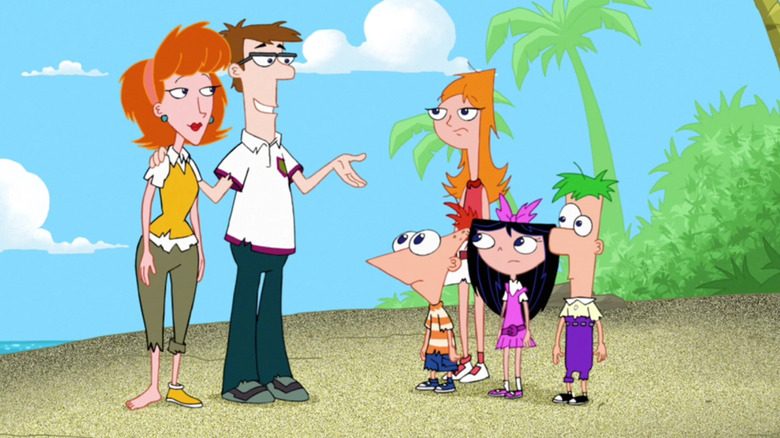Who Is Phineas' Real Dad On Phineas And Ferb? It Doesn't Matter - Here's Why
Phineas Flynn (Vincent Martella) and Ferb Fletcher (Thomas Brodie-Sangster) are not biological siblings. The two stars of Disney's animated musical series are stepbrothers in a blended family. While the show goes to great lengths to visually evidence this –- Phineas is a red-headed triangle with an ambiguously American accent, and Ferb is a green-headed rectangle with a distinctly English accent –- there's very little done to verbally explain their previous lives as Flynns or Fletchers.
More specifically, the series never even bothers to mention Phineas' biological father or Ferb's biological mother. And this isn't an accident because Dan Povenmire and Jeff "Swampy" Marsh, the co-creators of "Phineas and Ferb," wanted it that way.
As shared by Distractify, Povenmire, and Marsh once spoke about the marked absence. Or rather, they once refused to talk about it. "It's a question we don't feel compelled to answer," Marsh said. "It's not important to the kids' lives. They are a great blended family, and that's all we need to know." Povenmire added, "Suffice it to say that the original parents have been out of the picture since the boys were very young, and they are now simply a family." This focus on the family's present is seen throughout the series, with episodes such as "Dude, We're Getting the Band Back Together" never even addressing previous relationships when Lawrence Fletcher (Richard O'Brien) accidentally forgets his and Linda Flynn's (Caroline Rhea) wedding anniversary.
The co-creators of Phineas and Ferb fought underrepresentation
For Jeff "Swampy" Marsh, it was vital that "Phineas and Ferb" centered around a non-traditional family because it represented the lifestyle he himself grew up in, something that he felt that most media failed to do. "I grew up in a very alternative family structure and never felt that the media portrayed that type of family enough for it to feel 'normal' even though at least half of my friends were from divorced households and blended families," said Marsh. "We just felt that blended families had been underrepresented in cartoons and thought it would be a nice change."
According to a piece published by the National Healthy Marriage Resource Center, in 2004, at least 10% of children under the age of 18 were living with one biological parent and one stepparent. That's a statistically significant percentage for such family groups to not commonly appear in media. And, as recently as 2021, some studies have claimed that at least 40% of Americans are living as part of a blended family. According to the US Bureau of Census, 1300 new stepfamilies are created every day. All this to say that Marsh and Povenmire's work is more relevant than ever.
So, while it might be interesting to discover more about Phineas and Ferb's missing biological parents, it would only serve to reduce the importance of the children's present situation, which is built without them and is perfectly fine that way. Hopefully, this same level of care will accompany Dan Povenmire into his planned revival of "Phineas and Ferb."

